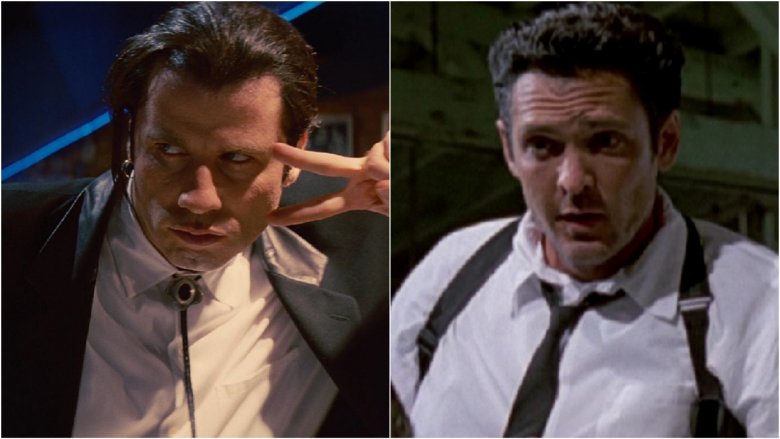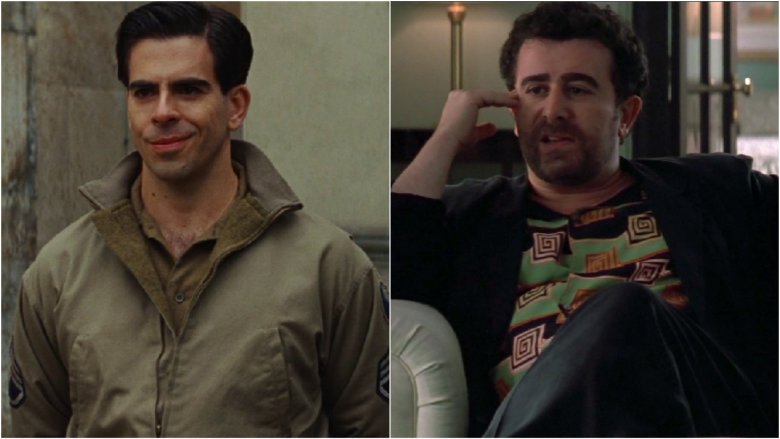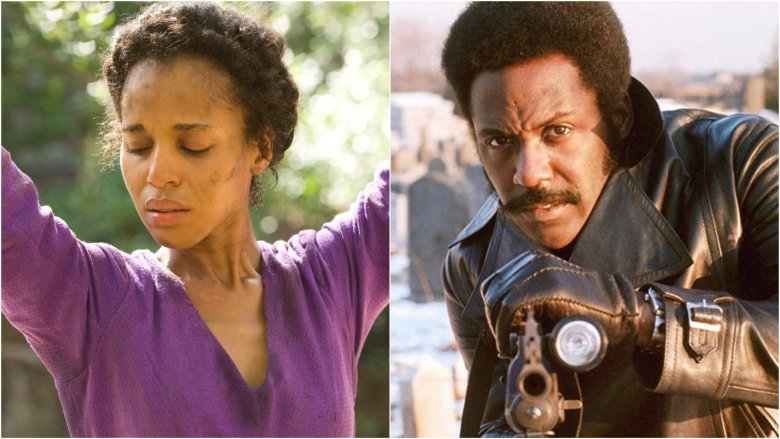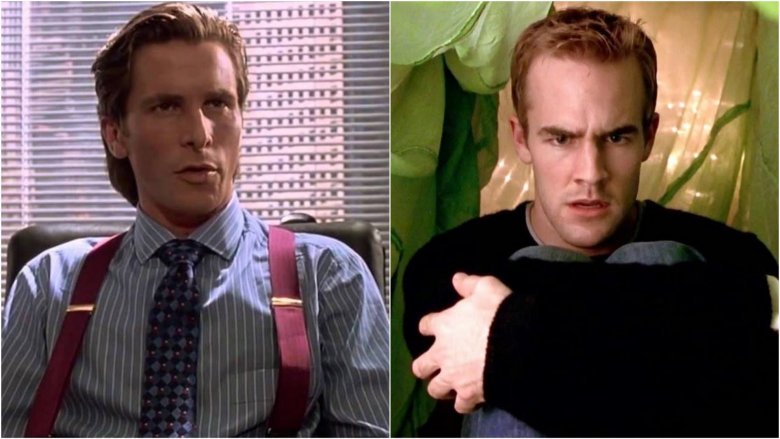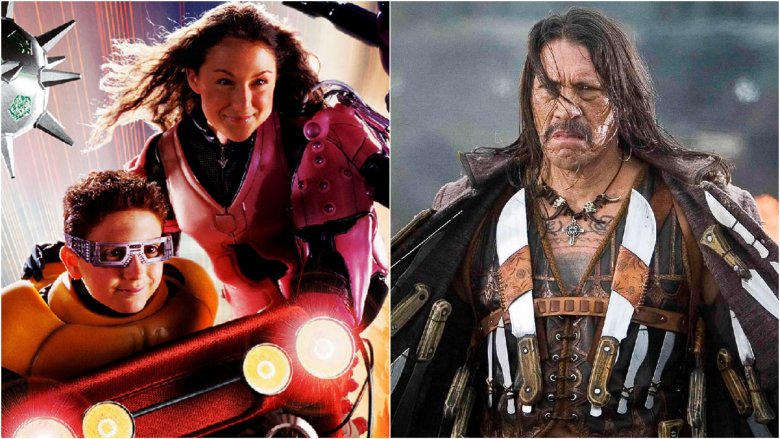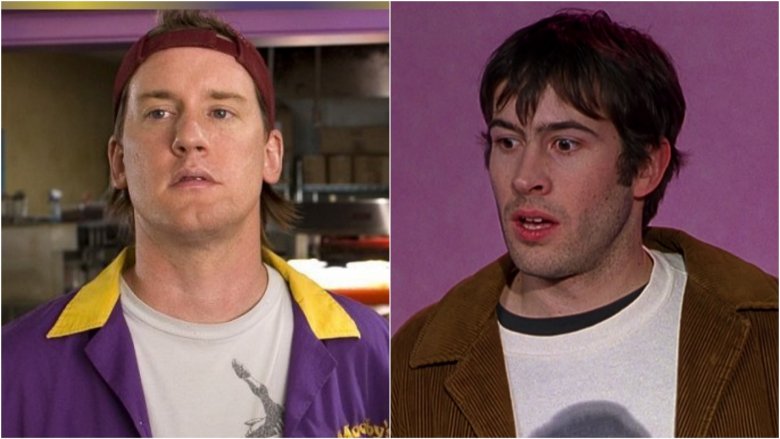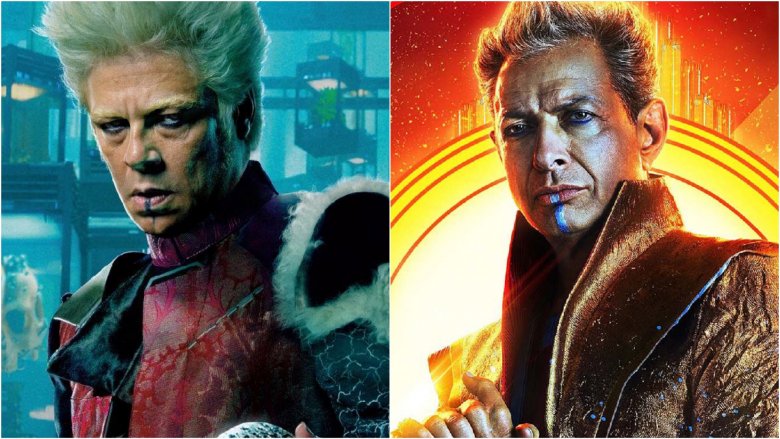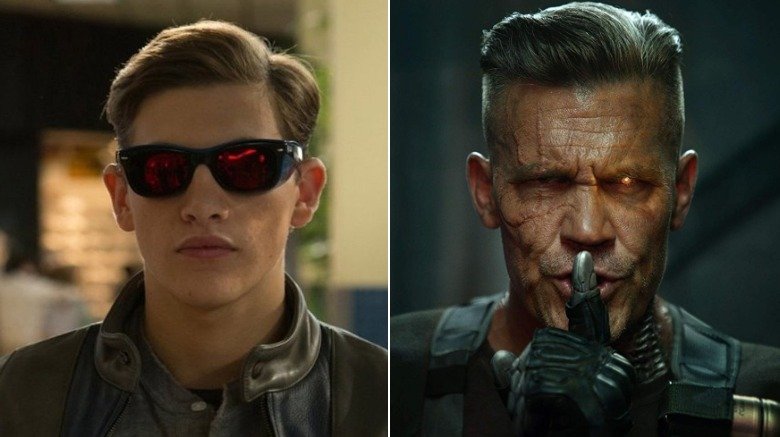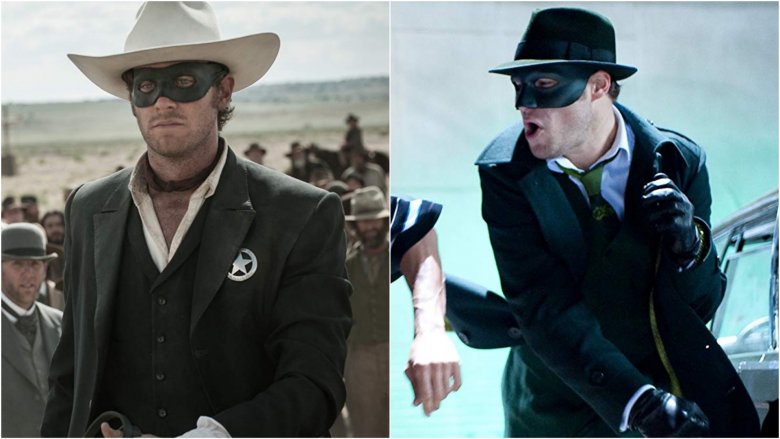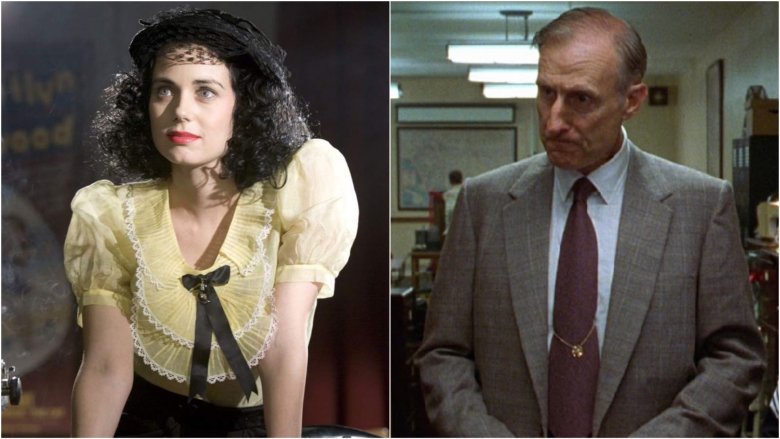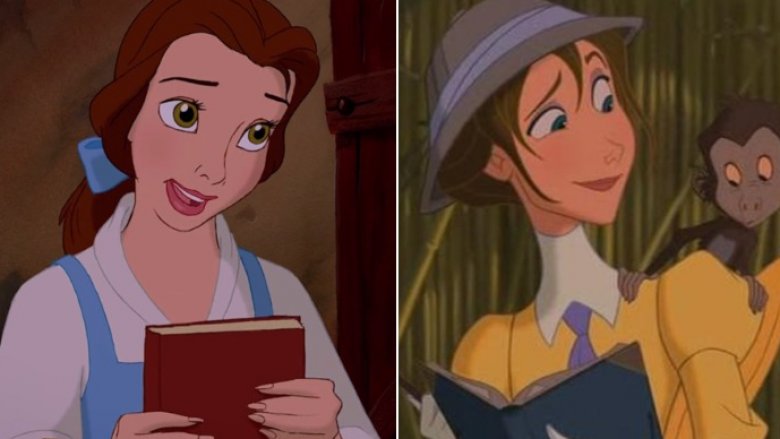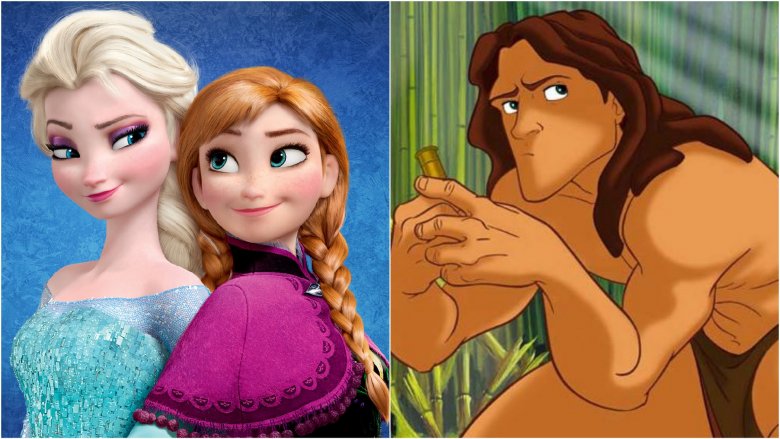Movie Characters You Never Knew Were Related
Thanks to shared cinematic universes being all the rage these days, characters from a variety of different films have found themselves tied to one another in a myriad of ways, including by bloodline. While the family bonds between certain characters is often spelled out — like Darth Vader telling Luke Skywalker he's his father in Empire Strikes Back — other times it's only hinted at, or even hidden. But eagle-eyed/eared fans have uncovered a variety of surprising familial relationships through sly references and carefully placed Easter eggs.
Some of these relations are only theoretical, while others are canon. Regardless, the evidence in each case is strong, so short of the creators writing in a scene where their characters take a 23andMe test, they will have to suffice. With that in mind, here are several movie characters that you might not have realized are related to each other.
Donny Donowitz (Inglorious Basterds) and Lee Donowitz (True Romance)
Well before Marvel Studios built an empire around interconnected stories and brought the phrase 'shared universe' into the pop culture lexicon, writer-director Quentin Tarantino mapped out the details of many of his movies took place in one of two universes. Honestly, you could fill an entire list like this out using only his movies. And while some of the connections are more obvious than others (such as criminally minded brothers Vic and Vincent Vega, from his debut and sophomore efforts, Reservoir Dogs and Pulp Fiction), some are more subtle.
One of the best is the father-son team of the baseball-bat-wielding Nazi hunter Donny Donowitz (Eli Roth) and his son, Lee Donowitz (Saul Rubinek), a blustery, drug-loving movie producer. Despite the shared surname, this one might be easy to miss, since Lee Donowitz was introduced in 1993's True Romance (which was written by Tarantino and directed by Tony Scott). Once you realize the connection, you can see the resemblance: both men were filled to the brim with rage (Donnie's more justifiable, but still) and both went down fighting in a hail of blood and bullets.
Broomhilda Von Shaft (Django Unchained) and John Shaft (Shaft)
Not content to simply play around in his own universes, Tarantino has been known to tie his stories to films made by others. This shouldn't come as a surprise to fans — his movies are overflowing with references, homages, and even straight up pilfering from other films, both well-known and obscure.
One such example is the connection he decided to draw between the heroine of his 2012 slave revenge epic Django Unchained, Broomhilda von Shaft (Kerry Washington), and one of the most iconic characters in American pop culture: John Shaft (Richard Roundtree), the '70's black private eye that was the center of Shaft (and its many sequels and side projects). Fans might have put two and two together when first hearing Broomhilda's full name during Django Unchained, but later Tarantino explicitly stated that he saw Broomhilda as an ancestor to the classic blaxploitation action hero.
Patrick Bateman (American Psycho) and Sean Bateman (The Rules of Attraction)
Writer-director Roger Avary was an early collaborator with Quentin Tarantino, co-writing the breakout 1994 hit Pulp Fiction, so it only makes sense that he too would enjoy exploring fictionalized universes for interesting character connections.
Similarly, the novelist Bret Easton Ellis tends to set most of his books in the same universe. So, when in 2003 Avary adapted The Rules of Attraction, Ellis's 1987 novel about debauchery at a wealthy liberal arts college, he was eager to keep a scene from the book where the main character, sociopathic drug dealer Sean Bateman (James Van Der Beek), has a tense phone call with his older brother, who just happens to be rich Wall Street broker and deranged serial killer Patrick Bateman, the main character from Ellis' American Psycho.
Avary went so far as to ask Christian Bale, who starred in the 2000 adaptation of that book, to reprise the role, but unfortunately the actor turned him down. Caspar Van Deen ended up playing the part, although the scene ended up on the cutting room floor.
Carmen and Juni Cortez (Spy Kids) and Machete (Machete)
Yet another of Quentin Tarantino's frequent collaborators, director Robert Rodriguez, began building out his own shared universes at the start of his career. Still, even given his history of connecting characters, it might come as a surprise to many to discover that the young, fresh-faced heroes of his family-friendly adventure series Spy Kids (played by Alexa Vega and Daryl Sabara) are actually the niece and nephew of Machete (Danny Trejo), the unstoppable killing machine who debuted in Rodriguez and Tarantino's Grindhouse and has since starred in his own (very, very violent) namesake series.
Trejo has served as Rodriguez's most frequent onscreen collaborator since appearing in his 1995 action blockbuster Desperado, so it only made sense to see him show up in the first Spy Kids movies as our young heroes' surly but good-hearted uncle, Isador Cortez, who they refer to as "Uncle Machete."
When asked about the disparity in tones between the two series, especially in regards to his violent actions in the Machete films, Trejo joked, "Oh, that's what Uncle Machete does when he's not taking care of the kids."
Randal Graves (Clerks) and Brodie Bruce (Mallrats)
Something must have been in the water that all the hip '90s indie filmmakers were drinking, because like his peers Tarantino, Rodriguez, and Avary, Kevin Smith was also obsessed with mapping out an entire universe for his films (and subsequently comic books, TV shows, and more). In the case of the Askewniverse (named after Smith's View Askew production company), two of his most memorable characters happen to be cousins: the smart aleck slacker convenience store clerk Randal Graves (Jeff Anderson) and equally mouthy comic book nerd Brodie Bruce (Jason Lee).
The connection is never acknowledged outright, but it is hinted at via a third connection. Both men, who serve as the sidekicks in their respective films, tell stories about the sexual misadventures of a certain cousin named Walter. Given the similarities between the actions of the Walter at the center of both stories, as well as the similarities between Randal and Brodie's personalities, it's all but taken for granted that the two are cousins.
The Collector (Guardians of the Galaxy, Avengers: Infinity War) and The Grandmaster (Thor: Ragnarok)
Just looking at them upon first glance, these two Marvel Cinematic Universe antagonists appear to be closely related — even though any familial connection onscreen would mark a departure from their shared origin in the comic books.
Originally, these two obsessive cosmic weirdos were simply members of the same ancient race of beings, known as the Elders of the Universe. Their connection has been winnowed down even further for the movies (where they were played by Benicio del Toro and Jeff Goldblum, respectively). According to the studio, the two are, in fact, brothers.
This is one of the few connections within the MCU that fans might have missed, given that it hasn't been noted onscreen. However, the similar look they share, including regal clothing, electro-shock hairdos, and colorful horizontal chinstraps, should serve as pretty obvious clues to their lineage.
Scott Summers, aka Cyclops (various X-Men films) and Cable (Deadpool 2)
There are a number of familial connections throughout the various films in the sprawling X-Men franchise, but most of them have been spelled out by the screenwriters at this point. One that hasn't, however, is the relationship between X-Men team leader Scott Summers, a.k.a. Cyclops (played by James Mardsen and Ty Sheridan) and his time-traveling supersoldier son from the future, Cable (Josh Brolin).
This is a connection that fans of the comics have been aware of for decades, but it hasn't been a plot point in any of the films, so without that frame of reference, you might not have been aware of the link. However, Cable's surname, Summers, is mentioned briefly in Deadpool 2, so it seems like it's canon in the films as well as in the comics.
The Lone Ranger and The Green Hornet
The family legacy of superheroes didn't begin in movies or comic books. Old-school masked crusaders the Lone Ranger and the Green Hornet, co-created by writer Fran Striker, got their start in the '30s when they both debuted as popular characters on the radio.
Their exact familial connection to one another has never been incontrovertibly proven, but it's generally thought that the Green Hornet is the Lone Ranger's grandnephew. It's been established that the Lone Ranger's nephew was named Dan Reid, which was also the name given to the Green Hornet's father. In one episode of the latter's show, after the Hornet reveals his identity to his father, his father references a vigilante in their family tree, which seems like a pretty obvious reference to the cowboy avenger.
Being that the rights to each property now belong to different companies, don't expect any future iteration of either character to etch this down in stone. Matter of fact, don't hold your breath waiting to see either hero onscreen again anytime soon, given how poorly their most recent adventures fared at the box office.
The Black Dahlia (The Black Dahlia) and Dudley Smith (L.A. Confidential)
The majority of the novels published by crime writer James Ellroy all take place in the same universe, so it's common to see characters appearing between them. In Ellroy's 2014 release Perfidia, it was revealed that the arch-villain of his famous L.A. Quartet Series (which includes The Black Dahlia and L.A. Confidential), corrupt L.A.P.D. detective Dudley Smith, is actually the father of Elizabeth Short, the real-life murder victim at the center of the unsolved Black Dahlia case.
Smith was memorably played James Cromwell in the 1997 film adaptation of L.A. Confidential, while Short was portrayed by Mia Kirshner in the less successful 2003 adaptation of The Black Dahlia. While no explicit link connects the films, if we look to the source material, they take place in the same world, which makes both characters even more tragic. Either way, it's a surprising connection that you wouldn't know unless you were all caught up on your Ellroy reading list.
Belle (Disney's Beauty and the Beast) and Jane (Disney's Tarzan)
Some connections between characters are more a matter of conjecture and speculation than anything else. And few properties have been the source of conjecture and speculation more than the properties of Disney. Fans love finding links and references between Disney films, and there have been any number of wild theories about the relationships between the heroes of disparate films.
One of the more convincing theories holds that the heroine of Tarzan, Jane, is actually the great-great-great granddaughter of Beauty and the Beast princess Belle. Those who ascribe to this theory have noted the characters' similar taste in yellow dresses, animalistic men, and some familiar-looking fine china. Through convoluted (but, again, convincing) speculation about a great-uncle, the theory connects the two, while explaining the differences in nationality (Belle is French, Jane is English) that might otherwise put a pin in it.
Else and Anna (Disney's Frozen) and Tarzan (Disney's Tarzan)
According to one popular (and apparently canon) fan theory, Elsa and Anna's parents, who kick off the events of Frozen by getting lost at sea (supposedly while on their way to attend the wedding of fellow Disney royalty Rapunzel and Eugene), were actually pregnant with a third child at the time of their disappearance. Rather than perishing at sea, the couple washed up on a nearby island and gave birth to a child, only to be killed by a leopard (the events depicted at the beginning of Tarzan). Their child would survive, and grow up to be none other than Tarzan.
Surprisingly, this theory was actually confirmed by Frozen co-director Chris Buck, with the caveat that it's only his belief, and not necessarily the official corporate line. It just goes to show that what starts out as a fan theory might actually be legitimized later on. Don't lose hope, film fan theorists: your seemingly wild idea could serve as the connection for the next shared film universe.
